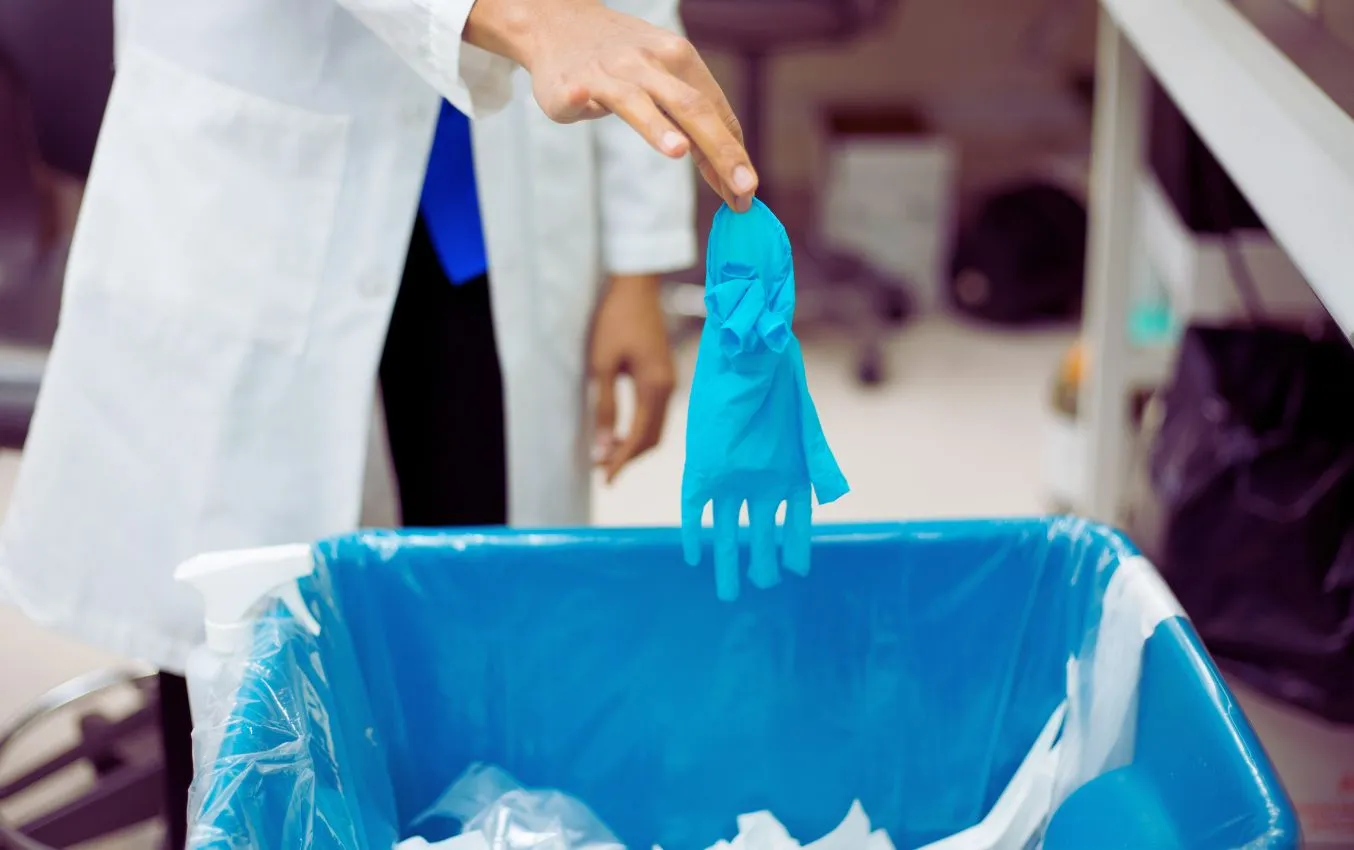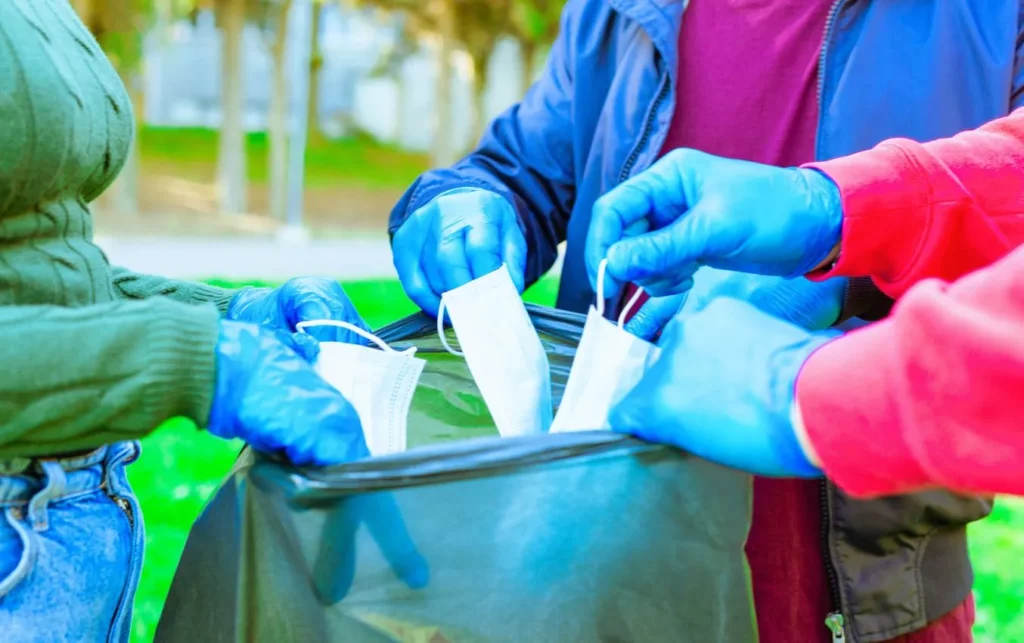Recycled nitrile gloves have the potential to significantly reduce the environmental impact of disposable glove waste. In industries where personal protective equipment is a necessity, like labs and hospitals, the use of disposable gloves is unavoidable. However, by choosing nitrile gloves, the most recyclable option among latex, vinyl, and nitrile gloves, individuals can contribute to a more sustainable practice. This article explores the process of recycling nitrile gloves, from preparation to proper disposal, shedding light on a simple yet impactful way to reduce the waste in landfills.
Table of Contents
- The Problem of Disposable Gloves
- The Scale of the Issue
- The Necessity of Disposable Gloves
- Can Disposable Gloves Be Recycled?
- Types of Disposable Gloves
- Recycling Possibilities
- Why Nitrile Gloves Are the Best Option
- Durability and Protection
- Hypoallergenic Properties
- How to Prepare Your Nitrile Gloves for Recycling
- Contamination Risks
- Washing and Drying Guidelines
- Proper Collecting Practices
- Separating Contaminated and Uncontaminated Gloves
- Weighing and Packaging Guidelines
- What Happens to Recycled Nitrile Gloves?
- Raw Materials and Recycled Products
- Examples of Recycled Products
The Problem of Disposable Gloves
The Scale of the Issue
A single lab can end up using around 5,000 pounds of disposable gloves a year. With millions of disposable gloves ending up in landfills, the environmental impact is significant and concerning.
The Necessity of Disposable Gloves
Disposable gloves are a necessity in various industries and everyday tasks to protect against hazards and contaminants. Whether used for professional purposes, cleaning, or arts and crafts, the importance of disposable gloves cannot be understated.
Plus, studies show that most recycling programs only accept nitrile gloves, as they are latex-free, hypoallergenic, and durable. By choosing nitrile gloves over latex or vinyl, not only are you opting for better protection, but also contributing to reducing waste by supporting recycling efforts.
Can Disposable Gloves Be Recycled?

Types of Disposable Gloves
Little is known about the various types of disposable gloves available in the market. There are currently three main types: latex, vinyl, and nitrile gloves. Each type has its own advantages and disadvantages. Perceiving which type is best suited for recycling can help reduce waste and contribute to a more sustainable environment.
| Gloves | Characteristics |
| Latex | Biodegradable, allergenic potential |
| Vinyl | Less durable, affordable |
| Nitrile | Latex-free, hypoallergenic, durable |
Recycling Possibilities
Types of disposable gloves that can be recycled can make a significant impact on reducing waste. Plus, recycling nitrile gloves, in particular, serves as a sustainable solution to the growing issue of disposable glove waste in landfills. By understanding the recycling possibilities, we can take small steps toward a more environmentally friendly approach in using disposable gloves.
Why Nitrile Gloves Are the Best Option
Durability and Protection
On top of being the only type of disposable glove accepted in most recycling programs, nitrile gloves also stand out for their durability and protective properties. Studies show that nitrile gloves are the most durable of the three types available in the market, making them a reliable choice for various industries where personal protective equipment is imperative.
Hypoallergenic Properties
Nitrile gloves are latex-free, making them hypoallergenic and suitable for individuals with latex allergies. This characteristic, combined with their durability, makes nitrile gloves a top choice for those in need of reliable protective gear. Additionally, the hypoallergenic properties make nitrile gloves a preferred option for recycling, as they are more widely accepted in recycling programs.
How to Prepare Your Nitrile Gloves for Recycling
Contamination Risks
Nitrile gloves are only going to be accepted into a recycling program if they aren’t contaminated. If your gloves have been contaminated by clinical waste, harsh chemicals, blood, bodily fluids, and oil, these will not be accepted into the recycling program.
Washing and Drying Guidelines
Recycling programs will accept nitrile gloves that have been used for hair dyes and water-based paints, but they must be washed and dried first before being put in the recycling bin.
It’s crucial to properly clean your gloves to ensure they meet the recycling program’s standards for acceptance. By washing and drying your gloves before recycling, you are helping to reduce the environmental impact of disposable gloves.
Proper Collecting Practices
Separating Contaminated and Uncontaminated Gloves
To ensure proper recycling of nitrile gloves, it is important to separate contaminated gloves from uncontaminated ones. Contaminated gloves that have been in contact with chemicals, blood, bodily fluids, and oil should not be included in the recycling program. Uncontaminated gloves, such as those used for hair dyes and water-based paints, can be recycled after being washed and dried.
Weighing and Packaging Guidelines
The recycling process for nitrile gloves may vary depending on the program. Some programs require gloves to be weighed before sending them out, while others do not. It is important to follow the specific instructions of the recycling program you choose to ensure the proper handling and recycling of your used nitrile gloves.
Properly separating contaminated and uncontaminated gloves before recycling is crucial to the success of the recycling process. By following the guidelines provided by the recycling program of your choice, you can contribute to reducing the number of disposable gloves ending up in landfills and help promote sustainability in the use of personal protective equipment.
What Happens to Recycled Nitrile Gloves?
Raw Materials and Recycled Products
To answer the question of what happens to recycled nitrile gloves, these gloves are either sold in the market as raw materials or transformed into recycled products such as park benches, trash cans, frisbees, and more.
Examples of Recycled Products
Recycled nitrile gloves can be repurposed into various useful items such as park benches, trash cans, frisbees, and other products. These recycled items provide a sustainable solution to reduce waste while serving functional purposes in our communities.
